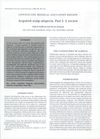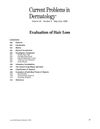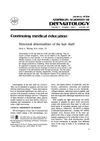Treatment of Diseases Associated with Non-Scarring Alopecia
January 2021
in “
Przegląd Dermatologiczny (1959)
”
non-cicatricial alopecia androgenetic alopecia senile alopecia anagen effluvium telogen effluvium alopecia areata systemic lupus erythematosus trichotillomania traction alopecia pressure alopecia lipedematous scalp lipedematous alopecia hair loss pattern baldness aging-related hair loss chemotherapy-induced hair loss stress-induced hair loss autoimmune hair loss lupus hair-pulling disorder tension hair loss pressure-induced hair loss swollen scalp swollen scalp hair loss

TLDR The article discusses various treatments for different types of non-scarring hair loss.
The document from 2021 is a review article discussing the treatment methods for diseases associated with non-cicatricial alopecia. Alopecia, the loss of hair volume or complete hair loss, can be a symptom of various diseases, ranging from local scalp pathology to systemic conditions. It significantly impacts the quality of life, affecting professional, social, and private aspects. The management of alopecia requires a comprehensive medical differential diagnosis, which goes beyond basic dermatological diagnostic procedures. The article provides information on therapeutic methods for treating specific diseases associated with non-cicatricial alopecia, including androgenetic alopecia, senile alopecia, anagen effluvium, telogen effluvium, alopecia areata, non-cicatricial alopecia secondary to systemic lupus erythematosus, trichotillomania, traction alopecia, pressure alopecia, lipedematous scalp, and lipedematous alopecia.





